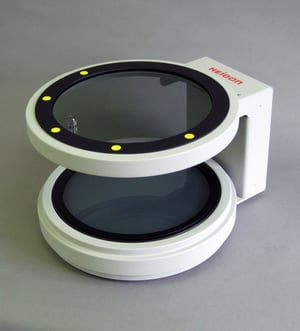 The plastics industry is one of the largest in the United States—it’s the third-largest manufacturing industry in the country, employing nearly 1 million people and grossing $380 billion annually.
The plastics industry is one of the largest in the United States—it’s the third-largest manufacturing industry in the country, employing nearly 1 million people and grossing $380 billion annually.
Plastics and polymers are part of our daily lives; they make up our cars, our packaging, our appliances, our household goods, our medical instruments and supplies, our children’s toys, and much, much more.
In all of that manufacturing exists an exact science. Plastics and polymers have to be engineered under very specific circumstances, or they contain faults and flaws that just may function as a product’s Achilles heel—they can crack or shatter or become misshapen.
To prevent these issues, those in the polymer industry must check these products for stress. Much like in carpentry where it’s important to measure twice and cut once, polymers need to be checked frequently at stress points for ideal results.
What Causes Polymer Stress?
The entire process of forming polymers and plastics—especially clear ones—introduces potential stresses. These stresses happen as a result of the extrusion, stretching, drawing, molding, casting and joining of polymers among other environmental factors.
Basically, any part of the manufacturing process can leave a polymer product with deformations that can lead to stress fractures. They also can happen when polymers shrink at varying rates, when they cool unevenly or when polymers don’t flow uniformly while they are being produced.
We rely on plastics and polymers to be strong and resistant to cracking, but these stresses caused during and after manufacture can lead to weaknesses. This also can happen with fluctuations in temperature, strain (the elongation of the polymer) and stress (the load).
Polymers change in how brittle or ductile they are based on these factors, which can lead to fracture or deformation. If you’ve seen plastic shatter in frigid temperatures, you can understand how this works; polymers are more susceptible to fracture when they become more brittle in the cold weather.
How Can We Monitor This?
We can track the stresses in polymers using a Model H25 Polymer Stress Monitor, which uses color spectra to identify potential stresses. Samples can be examined using the instrument’s large polarized lens, which identifies fractures and other discontinuities in white.
Creating a reliable polymer can be a tricky thing. Single molecules have to be perfectly combined like building blocks to create larger macromolecules. To the naked eye, a polymer can seem faultless and perfect, but by using a stress monitor, we can identify faults in the polymer that could prove disastrous down the road if the formula or the polymerization process are not adjusted accordingly.
The H25 Polymer Stress Monitor works on any polymer created via an injection mold or extrusion forming, using a fluorescent light source to find faults. Potential failure areas can be identified quickly with the easy-to-use instrument.
Other methods, like destructive testing, can be time consuming and don’t provide quantifiable data. A stress monitor can provide clear, visible results in less time for clearer data.
Who Can Benefit From Using a Polymer Stress Monitor?
Anywhere within the polymer and plastics industry, producers and engineers can benefit from using the Polymer Stress Monitor. Thin polymer coatings and products made from or with plastic can be susceptible to stress and need to be monitored for potential problems.
Many medical plastics are made using extrusion, forming, vacuuming and molding, which introduce residual, or “frozen-in,” stresses. In this case, plastic must be optimized to be as stress-free as possible. Otherwise, impact strength is diminished and high-temperature performance declines. Cracks and changes in mechanical performance can appear, and in the medical field, this can quickly become a nightmare situation if polymers and plastics are not monitored for stresses and imperfections.
What other situations call for strong, long-lasting, enduring plastics?
- Car seats, which are regularly exposed to the elements and have an expiration date because of their plastic elements
- Plastic components within a car and its engine
- Plumbing and PVC piping
- Any situation where you need plastics and polymers to be reliable, regardless of environmental stresses
Do you develop polymers for plastic products or plastic coatings or use polymers in production? Perhaps it’s time we talk about a polymer stress monitor.
Contact us today—our engineers are well versed in the language of polymers and want to help you create the safest, most durable polymers possible.

